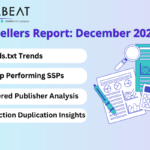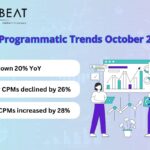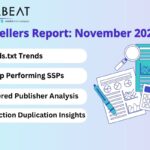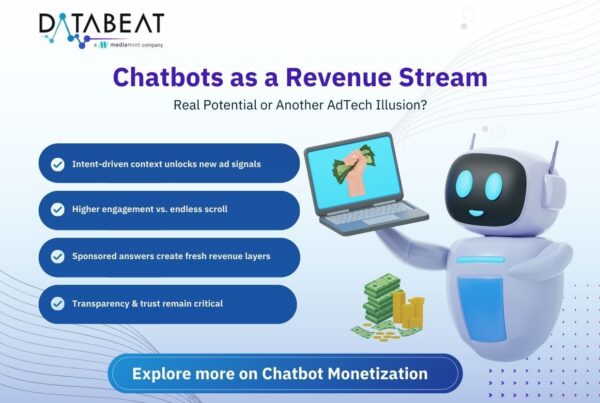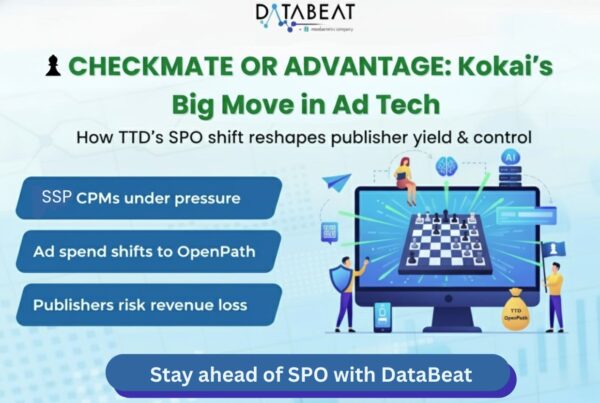
Key Takeaways of this Article:
- Chrome has phased out third-party cookies for 1% of users and introduced the Protected API for this audience. However, only 0.3% of impressions were served using these APIs across the Google Adstack.
- There is a 17% CPM variance between impressions delivered via the Protected API and those delivered via third-party cookies, consistent across the Google Adstack (AdX and OB).
- AdX holds a significant portion of impressions delivered through the Protected Audience API, indicating that Google’s demand is adjusting to this new API.
Google has initiated the testing phase of restricting third-party cookies by default for 1% of Chrome users. This move marks a significant step in Google’s broader effort to phase out third-party cookies entirely. By limiting third-party cookie usage among a small subset of users, Google aims to evaluate the impact on browsing experience, privacy, and advertising effectiveness before implementing changes on a larger scale. This testing phase will provide valuable insights into potential challenges and adjustments needed for both users and stakeholders in the digital ecosystem.
With Google Chrome’s decision to phase out third-party cookies, publishers are facing significant changes in their advertising landscape. This move will directly impact publisher eCPM (Effective Cost Per Mille), as third-party cookies have been integral to targeted advertising strategies. Without them, publishers may experience fluctuations in revenue.
*To minimize the damage to publishers’ revenue and also ensure the Audience privacy, Google has come up with Protected Audience API. Lets know more about Google audience Protected APIs*
What is Google Protect API:
Google’s Protected APIs, or Protected Audience APIs, are tools designed to enhance user privacy in ad serving. They allow advertisers to target ads to anonymized groups or cohorts based on shared interests or behaviors, preserving user privacy while still enabling effective ad targeting. One example is Google’s Federated Learning of Cohorts (FLoC), which groups users with similar browsing patterns. Overall, these APIs help advertisers reach their target audience while respecting user privacy.
Impact with protected audience API: Insights from Publisher for Publishers:
At Databeat, an analysis was conducted to evaluate the performance of ads delivered using the Protected Audience API i.e. without 3rd party cookies and Ads without Protected Audience API (it might have 3rd party cookies available). This analysis was done using the Protected Audience API delivery dimension in Google Ad manager and it focus only for Google Adstack (AdX, OB, and Adsense).
Lest find out answer to it:
Are the APIs available for all the requests where 3rd party cookies are not available?
Overall, only 0.3% of impressions were served using the Protected Audience API, notably lower than the 1% of deprecated cookies. This suggests that the Protected APIs are not utilized for all requests where a third-party cookie is unavailable.

What is the CPM difference between 3rd Party Cookies Ads and Protected Audience APIs Ads?
Ads delivered using third-party cookies boast a 17% higher CPM compared to ads delivered using the Protected APIs. This implies that if Google proceeds with scaling back cookie usage for Chrome users, publishers may experience a revenue impact of at least 17% for their Chrome user base.

Reduced Performance Gap: The Promise of Protected Audience APIs in a Post-Cookie Era
Traffic from Safari browsers, which lack third-party cookies, previously exhibited a 40% lower performance compared to Chrome browser traffic with third-party cookies. With the introduction of Protected APIs, this impact has reduced to 22%, indicating that Protected APIs can mitigate the effect, even though it still persists. It’s important to note that it’s early days for Protected APIs, and we may witness improvements as Google continues to phase out cookies and promote the use of Protected APIs. Better results could be anticipated in the future.

How did Google Adstack respond to the introduction of Protected APIs?
The decrease in CPMs is similar for both Open Bidding and Ad Exchange when the protected audience API is utilized.



Conclusion
Implementation of Protected APIs has reduced the CPM’s drop to 17%, indicating that Protected APIs can mitigate the effect of deprecation of 3rd party cookies, even though it still persists. It’s important to note that it’s early days for Protected APIs, and we may witness improvements as Google continues to phase out cookies and promote the use of Protected audience APIs. Additionally, the introduction of the Prebid module in the near future may further shape this landscape.
Looking Ahead:
As the digital landscape evolves, publishers face ongoing challenges in adapting to changes in advertising practices and user privacy concerns. With advancements such as the deprecation of third-party cookies and the introduction of privacy-focused initiatives like the Protected Audience API, publishers must remain agile in their strategies to maintain revenue streams while respecting user privacy.
Ultimately, the performance impact of these changes will vary across different types of publishers, depending on factors such as audience demographics, content verticals, and advertising strategies. Adapting to these changes requires a combination of technological innovation, strategic planning, and a commitment to user privacy. Publishers who proactively embrace these shifts and prioritize user trust are well-positioned to thrive in the evolving digital ecosystem.
To know more about the depreciation of 3rd party cookies please refer here



